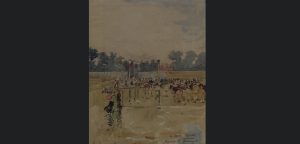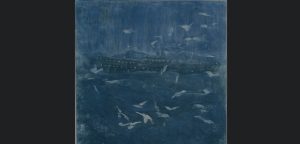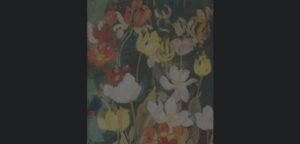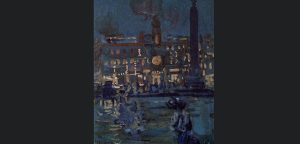Maurice Brazil Prendergast was born October 10, 1858 in St. John’s, Newfoundland, Canada.
1858 - 1924
Maurice Brazil Prendergast

description
An American painter, a talented aquarellist, one of the first artists in the United States, who began to use separate areas of color characteristic of Post-impressionism in his painting.
He was born into the family of a merchant. In 1868, the family moved to Boston, where the artist’s childhood passed.
Maurice Prendergast spent his life in constant travels between Europe and America, each time bringing new trends in painting and meeting new people in Paris. He was the first American to comprehend the importance of creativity of Paul Cézanne for the development of world art and put many efforts to introduce his works to his compatriots. The artist was a member of the group of American artists “Eight”, and participated with them in the famous exhibition “Armory Show” in 1913. The seven watercolors that were shown there presented Prendergast as the central figure in American painting, probably the greatest of his generation.
Key ideas:
– Maurice Prendergast is known as one of the prominent members of the “Eight” art group, organized as a protest against the conservative tendencies of the National Academy of Design. However, the themes of the artist’s works are significantly different from the works of other members of the group, who were later called the “garbage bin school” for their desire to portray the most unsightly aspects of everyday life and New York slums in particular. Maurice Prendergast preferred to paint sunny beaches, flowering gardens and parks, leisure, slowly strolling people.
– The author’s early works are mostly watercolors and monotypes. He also experimented with oil painting, but devoted much less time to it until the 1900s.
– From the start of his career, Maurice Prendergast developed his own original style and, despite the influence of the most different art movements, was dedicated to it until the end. Contrasting, saturated hues and expressive color spots distinguish the artist’s canvases.
– The artist used simplified flat forms, rhythmically organized into a single whole. His paintings, often with a large number of objects, resemble a tapestry or mosaic in their texture. Characters and views from the paintings of Maurice Prendergast are practically devoid of individual features, but are notable for their special elegance, warmth and charm.
1858
1892
1895
1898
1900
1907
1913
1915
1921
1924
The birth of the artist
Transferred to the Julian Academy
Went to Paris to study painting at the Colarossi Academy, and later transferred to the Julian Academy, where he studied until 1895.
Returned to America
Returned to America, where he settled with his brother in the town of Winchester, Massachusetts. He worked in the technique of watercolor, oil and monotypes.
Made a trip to Venice
Made a trip to Venice, where he saw the works of Italian master Vittore Viadgio. From this trip, Prendergast brought dozens of watercolors.
An exhibition of the artist’s works was held at the Macbeth Gallery in New York
An exhibition of the artist’s works was held at the Macbeth Gallery in New York.
“Bold” paintings
Returned to France. There, his work was significantly influenced by Cezanne and the Fauvists. During this period, Prendergast painted more “bold” paintings using bright colors and separate strokes.
Participated in the Armory Show exhibition in New York
Participated in the Armory Show exhibition in New York, where he presented seven watercolor works. The exhibition was a great success.
The solo exhibition
After moving with his brother to New York, he organized a solo exhibition at the Carroll Gallery.
He spent the last years of his life in New England and in New York
A small retrospective exhibition of the artist’s works was held at the Brammer’s Gallery in New York. He spent the last years of his life in New England and in New York, constantly painting.
The death of the artist
He died on February 1, 1924 in New York, USA.









